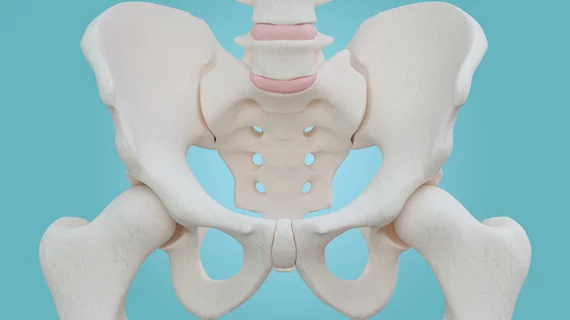Radiologists often misread common pelvic fractures, pushing some to unneeded specialty care
Radiologists commonly mistake pelvic fractures requiring minimal follow-up for those involving the anterior column, which typically necessitates specialized care. These misses can directly affect patients and lead to unnecessary healthcare spending, experts said in a recent study.
Pelvic injuries are often first assessed in emergency departments or urgent care centers, and physicians rely on subsequent radiology reports to guide decision making. Despite this, 85% of pubic root fractures were misidentified as anterior column fractures, authors reported in the Journal of Clinical Orthopedics and Trauma.
Differentiating between the two is difficult but crucial. Providers may read rad reports and decide to transfer patients to tertiary care centers who may not actually need expensive subspecialized treatment.
“The results of this study show that increased awareness of pubic root fractures and their distinguishing features can help differentiate them from anterior column acetabular fractures and potentially reduce healthcare costs and risk of radiation exposure to patients,” Sravya P. Vajapey, MD, with the Department of Orthopedics at The Ohio State University Wexner Medical Center, and co-authors added.
To spot pubic root fractures, radiologists should look for a “tangential” fracture line relative to the articular surface on axial CT compared to a perpendicular fracture line associated with anterior fractures, the authors wrote.
The Ohio State team based their insights on a cohort of 155 patients who suffered pelvic or acetabular fractures at a level 1 trauma academic institution. Pelvis CT scans were used to diagnose all injuries.
Overall, radiologists misdiagnosed 85% of the 83 patients with pubic root fractures as having an anterior fracture. Those with true anterior column acetabular injuries were more likely to require surgery (64% vs. 42%) and be discharged to skilled nursing or inpatient rehab compared to others (59% vs. 40%).
Vajapey and colleagues emphasized that patients transferred to other care facilities often undergo repeated CT scans which lead to both added radiation and costs.
They suggest future studies analyze transfer patterns, whether surgery is performed, and associated healthcare costs.
Read the entire study here.

